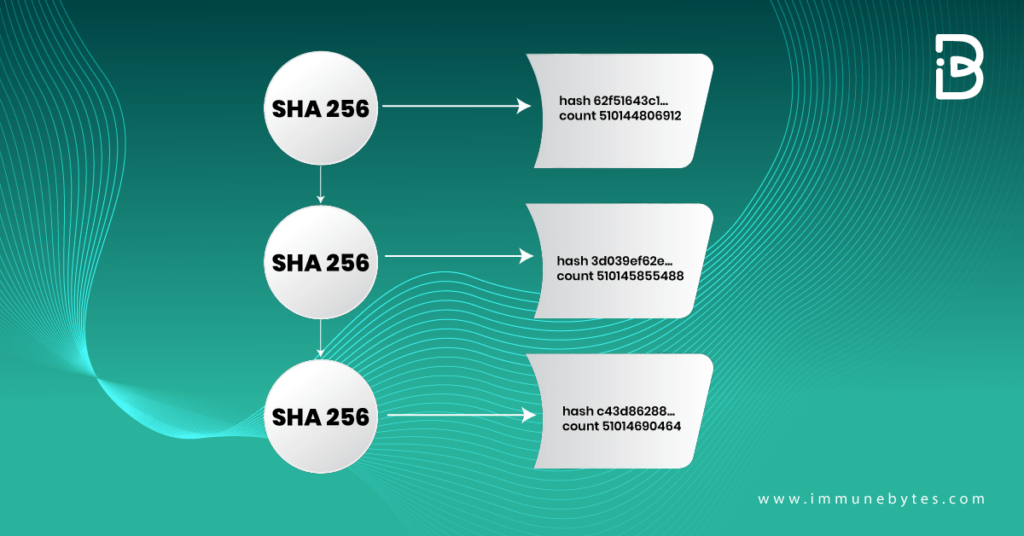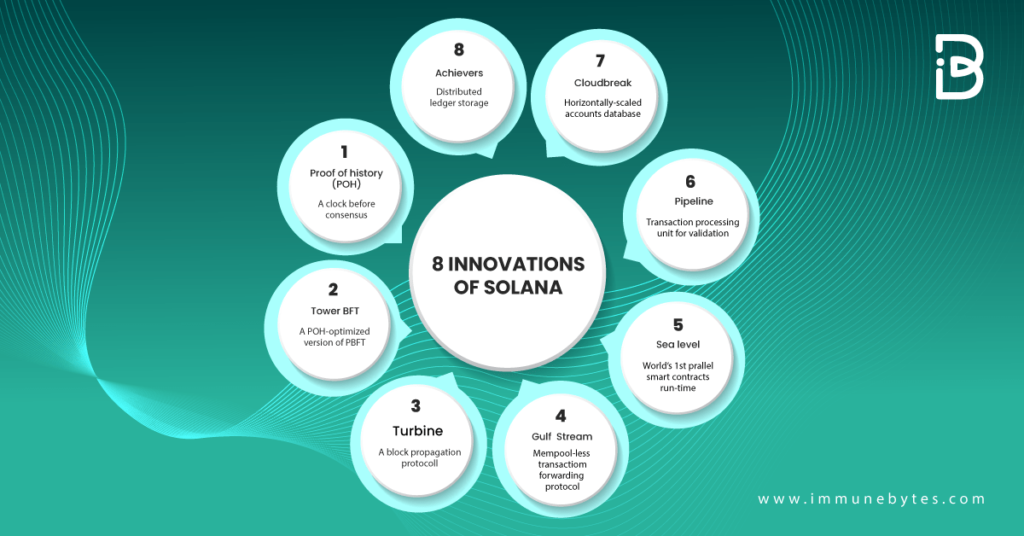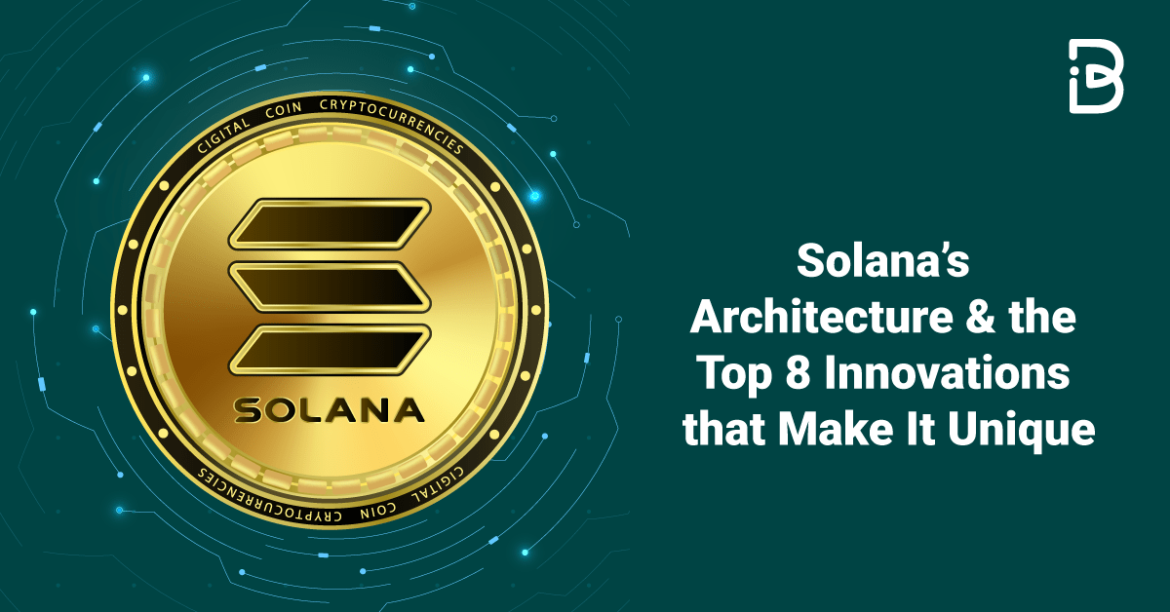Solana is often said to be Ethereum’s growing rival. Rightly so, the blockchain became immensely popular among crypto watchers in a short span of time. It is a public, open-source blockchain that supports Solana smart contracts, Non-Fungible Tokens (NFTs), and a variety of decentralized applications (dApps).
Anatoly Yakovenko developed Solana alongside current Solana board member and Chief Operations Officer Raj Gokal in 2017. The blockchain’s founders were looking forward to designing a trustless and distributed platform that would allow for more scalability and solve the persisting issues with the technology.
The objective behind this blog is to get you acquainted with Solana’s technical architecture and the 8 innovations that are highly talked about and make it different from the rest of the blockchain frameworks.
By the end of this blog, you’ll learn:
Solana’s Architecture
Table of Contents
Solana administers a new, permissionless, and high-speed layer-1 blockchain. It is often believed that blockchains can only be built so that developers will sacrifice either of the three pillars of the blockchain trilemma.
The blockchain trilemma, a concept proposed by Vitalik Buterin, refers to the commonly held notion in the crypto space that, among the three important aspects, decentralization, security, and scalability, decentralized networks can only offer any two of the three benefits at a given time. However, Solana aims to solve this issue uniquely.
As one of the most efficient blockchains in the space, Solana employs a hybrid protocol of Proof-of-Stake (PoS), and Proof-of-History (PoH), a concept developed by the Solana team.
Proof of Stake is a consensus mechanism wherein crypto holders pledge or ‘stake? their crypto holdings to a validator. These validators are then picked to append the next block of transactions depending on a number of factors such as how large their stake is or how long they have staked for.
Proof of History, on the other hand, is a fairly new concept that is designed by the developers at Solana. It is said to be one of the 8 core innovations that were put forth by Solana. Let’s see what it is.
Proof of History
Proof of History dispenses a fundamental move toward the structure of blockchain technology with regard to speed and capacity. Proof-of-History (PoH) is derived from Proof-of-Stake (PoS). It primarily focuses on the concept that instead of trusting timestamps given on a block, you could prove that a message occurred at a specific time before and after an action
In most distributed systems, agreeing to the time and sequence in which events happen becomes a challenging situation as the nodes of a network can not simply make the assumption that an external source of time or timestamp appears in a message and is truthful.
Solana’s Proof-of-History is an attempt to solve this problem! The protocol makes it possible to create a historical record that proves an event that happened at a specific time. Why PoH? The simple answer to this question is, to increase the efficiency and speed of transaction processing within the Solana blockchain network.
PoH is a high Verifiable Delay Function (VDF). The platform requires validators to solve these VDFs continuously. A VDF requires a specific number of sequence steps to evaluate but also produces a unique output that can be efficiently and publicly verified. VDFs can only be solved by a single CPU core applying a particular set of sequential steps.

Let’s see what the other 7 features of Solana are that make it so unique!

Tower BFT
The Tower BFT mechanism is used to improve the network’s responsiveness by allowing Validators to vote on the state of the ledger. This system also records the previous votes and uses them to speed up validation by allowing Validators to reference their previous votes rather than running the entire transaction chain.
In simpler terms, we can consider Tower BFT as an upgraded version of the Practical Byzantine Fault Toleration (PBFT) system found in other DPoS blockchains.
Turbine
As the Solana consensus layer holds no dependence over peer-to-peer messages, making it possible to optimize the way blocks are transmitted through the network independently. the Turbine is essentially a block-propagation technique. In a distributed network when we increase the node count, it implies an increase in the amount of time required to transmit all the data to all nodes.
Solana’s Turbine solves this issue!
With Turbine, when a node releases a message to 500 of its peers, it would not be required to transmit the information 500 times. Instead, that message is broken down and sent in a packet to a different validator. Each validator retransmits the packet to a group of peers. In simpler terms, the turbine divides the data into smaller packets, making it easy to transmit to blockchain nodes. Consequently, It results in increased bandwidth and capacity of Solana-supported transactions.
Gulf Stream
The Gulf Stream eliminates the need for the ?Mempool concept?, which is a waiting area for transactions before they are chosen to go to the next block. This reduces the confirmation time of transactions by caching and forwarding them instantly.
Gulf stream brings out a new strategy that allows the network to forward transactions to validators before the current block of transactions is finished with its approval.
Sealevel
Sealevel gives Solana a major advantage over the most popular smart contract-based networks in use today!
Solana employs Sealevel to execute smart contracts that can run parallelly. This also allows similar smart contracts to leverage the same protocols. This strategy implies that thousands of smart contracts can run simultaneously and in parallel without bogging down the network’s performance.
Pipeline
Solana incorporates a transaction processing unit known as Pipelining. The protocol works by assigning a stream of input data to different hardware based on its specifications. This system helps to improve block validation times.
Cloudbreak
Cloudbreak, a data structure protocol, is used to read and write across the network concurrently. Cloudbreak is the Solana network’s account database. In order to achieve the necessary scalability on the Solana network, it requires the use of Cloudbreak which is optimal for concurrent reads and writes across the network.
Archivers
Archivers are employed for data storage. Data on Solana offloads from validators to a network of nodes known as Archivers. These nodes can be lightweight and they will be subject to a check, every so often, to ensure they are storing the right data.
Conclusion
Solana enables low gas costs and much faster transaction speeds than the existing blockchains in the market; the community is aware of these simple wins. Although there are other lesser-known yet powerful features, the 8 unique features we discussed above, that we think truly lend themselves to Solana being the platform of choice for future projects.
Numbers, large investors, unique mechanisms, and technologies, all these features make Solana blockchain attractive and successful. Solana is definitely a prospect for the future of the crypto industry!
ImmuneBytes works closely with clients to identify and resolve potential vulnerabilities in their Solana smart contracts without disrupting normal activity or activity on the blockchain. With an experienced team of smart contract auditors, ImmuneBytes delivers an unparalleled level of expertise in Solana smart contract audits and commitment to quality ? guaranteeing that our clients? blockchains can operate without disruption.

